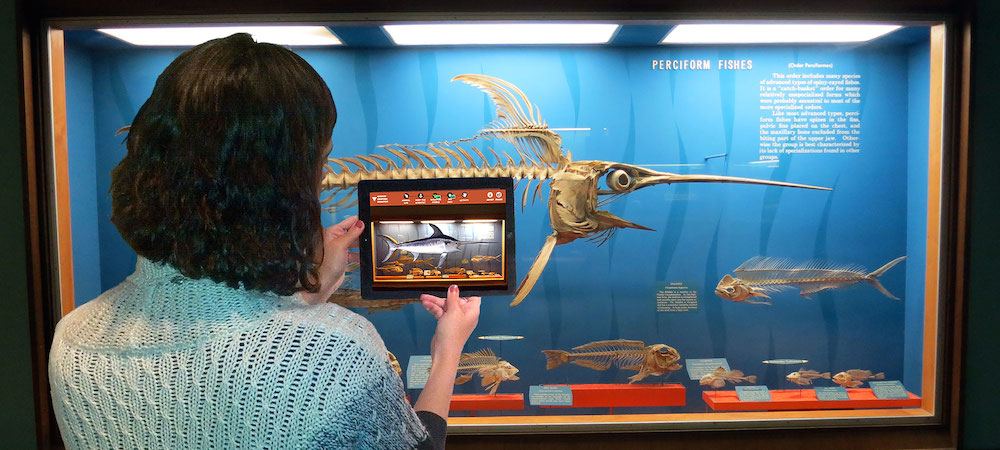Smithsonian App Brings Fossils to Life

A new mobile app is bringing skeletons to life at the Smithsonian's National Museum of Natural History in Washington, D.C.
Users can now download the free Skin and Bones app before exploring the museum's historic Bone Hall, an exhibit of nearly 300 vertebrate skeletons that was first opened in 1881. The app highlights 13 skeletons, including one of a swordfish, and shows 3D animations of the animals and how they look and move with their muscles and skin.
"This app is all about sharing some of the untold stories behind one of the museum's most iconic collections," app producer Robert Costello, the Museum of Natural History's national outreach program manager, said in a statement. "From vampire bats to a 150-pound Mississippi catfish, Skin and Bones highlights specimens across the tree of vertebrate life and invites visitors to interact with them in surprising ways." [6 Strange Species Discovered in Museums]
Once people download the Skin and Bones app, they can listen to expert information on each of the animals, watch a variety of videos and animations, and complete activities paired with each animal.
Museum-goers simply have to point the camera on their mobile device at the specimen, and an animated creature with muscles and skin will appear on-screen, overlaid on the bones. For instance, visitors can see the eastern diamondback rattlesnake skull snap its long fangs into a virtual rodent, or try to identify bats by their unique calls.
Other videos describe the animal's ecology, biogeography, functional anatomy and evolution. The Skin and Bones app took developers two years to complete, and was released yesterday (Jan. 13), the Smithsonian said.
People with an iOS7.1 or later operating system can download the app onto their iPhone, iPad or iPod touch by visiting the iTunes app store.
Get the world’s most fascinating discoveries delivered straight to your inbox.
Follow Laura Geggel on Twitter @LauraGeggel. Follow Live Science @livescience, Facebook & Google+. Original article on Live Science.

Laura is the archaeology and Life's Little Mysteries editor at Live Science. She also reports on general science, including paleontology. Her work has appeared in The New York Times, Scholastic, Popular Science and Spectrum, a site on autism research. She has won multiple awards from the Society of Professional Journalists and the Washington Newspaper Publishers Association for her reporting at a weekly newspaper near Seattle. Laura holds a bachelor's degree in English literature and psychology from Washington University in St. Louis and a master's degree in science writing from NYU.
